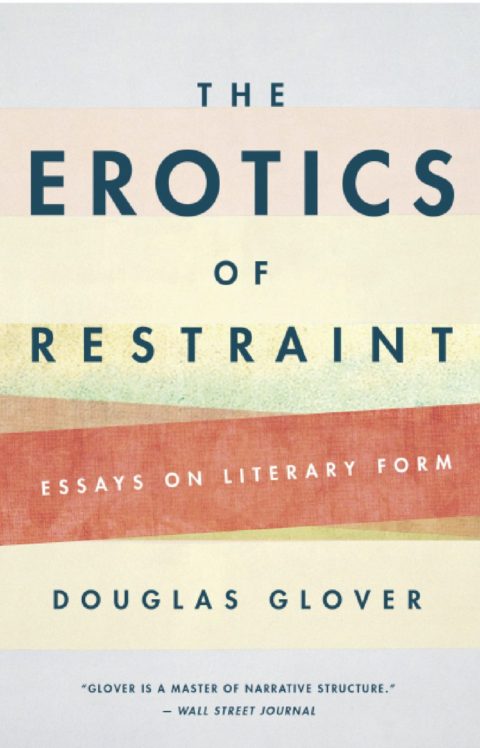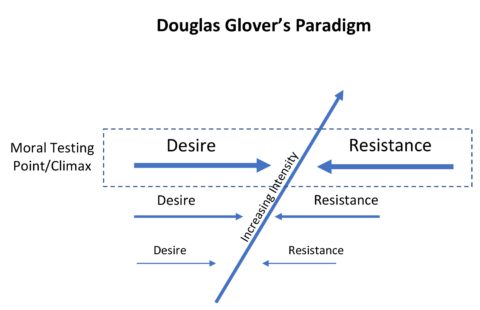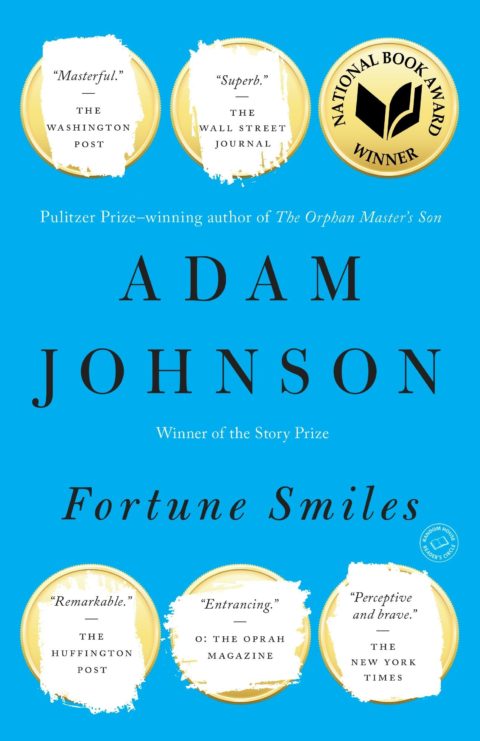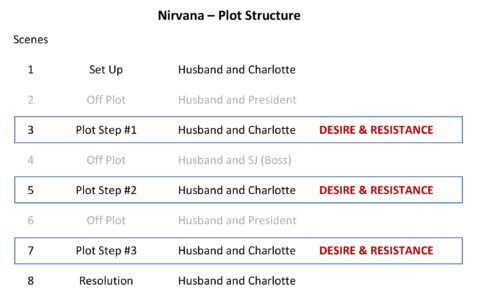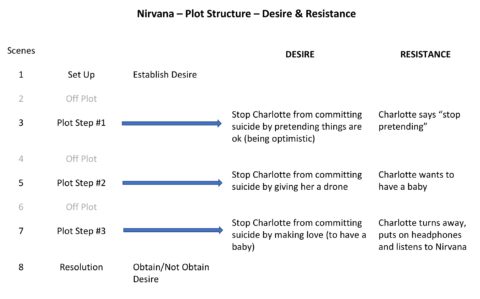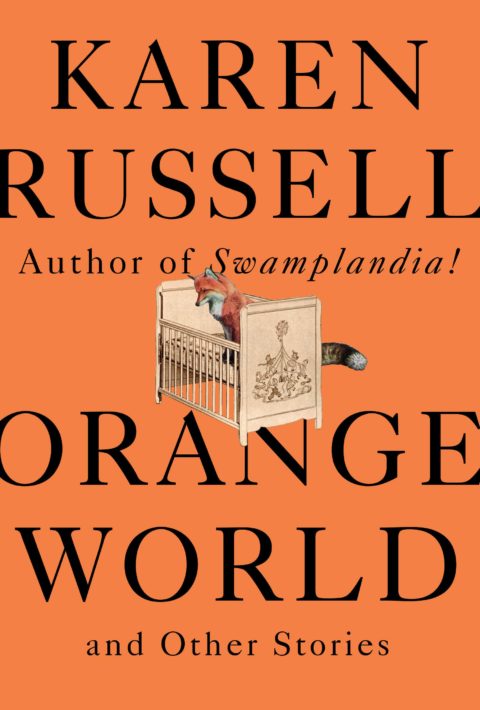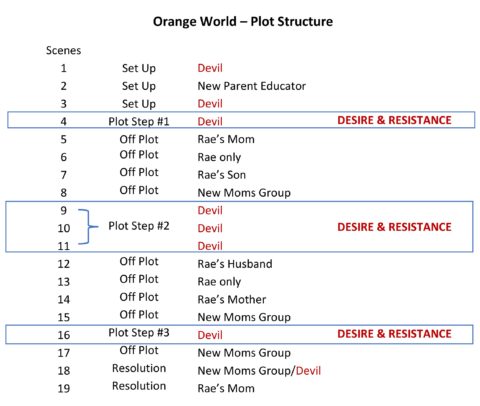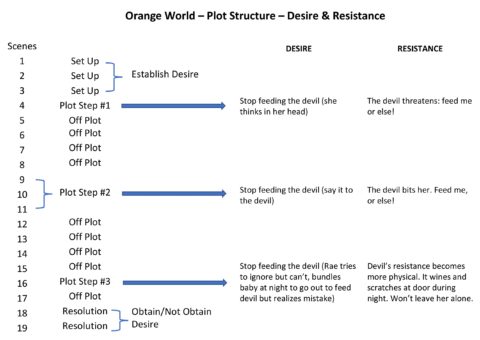Robert Olen Butler, in his book From Where You Dream: The Process of Writing Fiction says, “It’s the dynamic of desire that is at the heart of narrative and plot” (Butler 40). Characters want something and their yearning to obtain it is what drives the story. As Douglas Glover says in his essay “Anatomy of the Short Story” from his new book The Erotics of Restraint, Essays on Literary Form: “Plot is a desire and a resistance meeting each other over and over, each iteration increasing in intensity moving towards a climax.”
These statements on plot structure may appear simple and easy to follow, but the application can be more challenging than expected. Sometimes, it’s just a feeling the writer has—the story lags, it seems to be going nowhere, the short story has suddenly transformed to the length of a novella with no end in sight. The writer is invested in the project but knows in her heart, the story has no tension.
Often these are symptoms of the root cause: the story lacks desire, the story lacks resistance, the story lacks plot structure.
In this essay, I review two contemporary speculative short stories, since that’s what I like to read and what I aspire to write, “Orange World” by Karen Russell and “Nirvana” by Adam Johnson, to examine their pattern of desire and resistance—basic elements of plot and story that form the crux of both realistic and speculative fiction.
Glover boils plot structure down to three elements:
1 One desire and one resistance repeated;
2 Conflict between two opposing forces (desire and resistance); and
3 Three instances of desire and resistance (there can be more, but often its three and, of course, there are always outlier forms, he says, always exceptions, but this is what most stories are like).
Julie Jones’s essay “Weird Plots for Strange Stories: Alternatives to Conventional Plot Structure” in Numéro Cinq’s Holy Book of Literary Craft offers examples of outlier forms.
Keeping the conflict between two opposing forces doesn’t necessarily mean two characters. It can be an internal desire and resistance within one character, or it can be a character against nature. The key is that there is only one desire and one resistance. A simple example might be character A wants to go on a date with character B, but character B doesn’t want to. In the short story, character A tries three times (with increasing intensity) to get character B to go out with them. The climax is where the protagonist will reach their moral testing point and the question will be answered: will character A go out with character B?
What adds additional complexity and depth to a short story are the elements added on top of the fundamental plot skeleton. These include:
• Image patterning: The repetition of words and/or images to create a specific rhythm in a story; and
• Thematic passages: Text within a story that spells out what the generalized meaning of the story is.
I wanted to mention these structures (plus backfill) briefly because I have often focused too heavily on these elements before I have developed the plot structure. It’s so fun to think about how to weave an image like water or eyes into a story to evoke rhythm and emotion. Recently I had to cut out half of a story because it was entirely made up of backfill, only to find out I was also missing the plot structure! Indeed, we could spend an essay on each one of these elements (and for more details, please refer to Glover’s new book), for now, we’re going to leave those to the side and stick to the basics of plot structure and specifically desire and resistance.
We’re going to look at two speculative short stories to see how they adhere to traditional plot structure. “Orange World”, by Karen Russell, first published in The New Yorker in June 2018 and recently released as the title story of Karen Russell’s latest collection of short stories and “Nirvana” which was published in Esquire in August 2013. The story won the 2014 Sunday Times short story award and can also be found in Adam Johnson’s 2015 collection of short stories Fortune Smiles.
Adam Johnson’s “Nirvana” is a present-tense 8,400-word, 28-page speculative short story told from the first-person perspective of an unnamed husband whose wife Charlotte becomes paralyzed after contracting Guillain-Barre syndrome.
She may get better, or she may not. She has extracted a promise from her husband to help her commit suicide if she decides she wants that. He doesn’t want to help her and so his desire, the story desire, is to be released from his promise.
She lies in bed with her headphones on and listens to music by Nirvana.
Meantime, the husband, a computer programmer in Silicon Valley has created a three-dimensional life-sized projection of the recently assassinated President of the United States. But it’s more than just a hologram. The husband has written Artificial Intelligence software—an algorithm—that searches the internet for sources of information regarding the President including speeches and interviews. The hologram uses the President’s own recordings to create responses to questions. Anyone who has the program can engage in a conversation with the dead President. In a short period of time, the “hologram” (for want of a better word) of the President goes viral. The husband finds solace in speaking with the President’s hologram (as do people all over the country) and seeks the President’s advice about what to do about his situation.
At the beginning of the story, a little drone flies into the protagonist’s bedroom. The drone appears in the story three times and has its own little story line. The protagonist captures the drone, uses it to entertain his wife, and eventually lets it go.
The husband makes three attempts in the story to get Charlotte to release him from his promise. But, in the end, he realizes that he is not the one whose help she wants. To ease Charlotte’s pain, he creates a hologram/software program exactly like the President but of the only person she feels understands her suffering and who can make her see that ending her life is not the answer – Kurt Cobain.
“Nirvana” is broken into eight sections.
The desire in the story is the husband wants Charlotte to release him from his promise to help her kill herself. He does this by trying to get her to give up the idea of suicide.
The resistance in the story is Charlotte’s resistance to his attempts to achieve his desire. She still wants to maintain the suicide option.
Five of the eight scenes in the story occur between the protagonist and Charlotte. This includes the set-up (the beginning), resolution (the end), and the three plot steps—each an attempt with increasing intensity by the protagonist to obtain his desire and Charlotte resisting each attempt.
In addition to the five scenes, there are three off-plot scenes. Two off-plot scenes between the husband and the hologram of the President and one off-plot scene in the middle between the husband and his boss SJ. There is a lot going on in the off-plot scenes. The protagonist seeks advice, the reader is introduced to another character, we learn more about the world-building of the speculative aspects of the story, and the issues between the protagonist and Charlotte are paralleled in some way from the information we gleam from the President’s answers and SJ’s backstory. These all add depth to the story, but they are off-plot scenes and not to be confused with the plot scenes that make up plot steps.
Let’s go back to those scenes between the protagonist and Charlotte. In the set-up (which includes a bit of backfill about the development of the disease and the scene in which Charlotte extracts the promise), Charlotte says she wants her husband to stop talking to the President. The husband responds by thinking about the President and the grief (and by implication her diseases). If she knew how much he’d grieve, she wouldn’t kill herself. – We establish his desire.
In the three plot steps, he deploys three different strategies to achieve his desire.
In plot step #1 (the first instance of desire and resistance), his first approach to obtain his desire for her ot to commit suicide is to be optimistic and cheery in her presence. At her bedside, he tries to be positive and encouraging. She scoffs.
“You don’t have to make me feel better, you don’t have to be all fake and optimistic. It doesn’t help,” she says.
“I’m an optimist,” he replies.
“You shouldn’t be,” she says. “Pretending, that’s what killed Kurt Cobain.”
In this scene, she asks him to stop pretending and he replies at the end with “I give up.” He has failed at this stage to inch closer to achieving his desire.
In plot step #2—his second attempt to obtain his desire, he provides his wife with equipment to help her do the things she can’t. He has captured and re-wired that little drone and connected it to a pair of Android glasses. This strategy is also a response to Charlotte’s previous comments when she said to him: “You don’t know how bad I want to get out of this bed,” and “I’d do anything to escape.” When she puts on the glasses, she can control the drone and see what the drone sees. The drone flies out the window and hovers over the garden and Charlotte’s roses. She smiles, even gasps in delight–a positive response that buoys her husband’s optimism that his desire is within reach. But then she starts to cry and tells him: “I want to have a baby.” “With a baby…I’d have something to leave behind.” She is still thinking about ending her life. “You can’t talk like that,” he says, but it’s no use—“She won’t listen.” Again, his desire to save his wife has been thwarted by her resistance.
The desire/resistance conflict comes to a climax in plot step #3 between the husband and Charlotte. In this scene, he complies with Charlotte’s request for a baby by making love to her. The husband again restates his desire: “I try to focus on the notion that if this works, Charlotte will be safe, that for nine months she’d let no harm come to her, and maybe she’s right, maybe the baby will stimulate something and recovery will begin.” The goal (the desire) is always to stop her from killing herself.
But twice in this scene, she indicates that even a baby won’t quell her desire to die. During intercourse she says (regarding the promise she made her husband make to help her end her life when she wants to): “The idea that there’s a way out, it’s what allows me to keep going.” Her husband replies:
“I hate that promise, I hate that you made me make it.”
“I’d never do it,” she says, “and I’d never make you help.”
“Then release me,” he tells her.
“I’m sorry,” she says.
In this most intimate of moments, when he is giving of himself in the desire to eradicate the suicidal thoughts from his wife, he has failed yet again. The baby would only delay the inevitable. In a final act of frustration, he grabs “her wrists and pin them down, but she can’t feel it.” He demands, “What’s wrong with you…just tell me what it is that’s wrong with you”–a sign of utter desperation. In this third plot step, he has reached the pinnacle of despair.
In the last scene between the husband and Charlotte, the plot resolves. The husband still desires to save his wife but realizes that it is not his place to help her. He is not the voice she seeks. Only when he gives her the hologram of Kurt Cobain does she come alive. She wills the hologram of Kurt to live. “Don’t do what you’re thinking about doing,” she pleads and “leans towards Kurt Cobain…like she’s forgotten that her arms don’t work and there’s no him to embrace.”
Notice the pattern and the rhythm of the story. The spacing between his interaction with Charlotte, the President and SJ. There is a distinct structure. The protagonist needs the President and at the end of the story, he realizes that Charlotte needs Kurt Cobain in the same way.
“Orange World” by Karen Russell is an 8,000-word, 27-page short story written also in the present tense. Our protagonist, Rae is pregnant and finds out her unborn son has a 1/14 chance of survival. To save him, she makes a deal with a devil in the form of a creature that lives in the rain gutter across the street from her home. She promises to breastfeed the devil and in return the devil will keep her son safe. Between plot steps with the devil she attends a new mothers group.
The New Parents Educator tells Rae that we all live in a semi-safe state known as Orange World. We strive to avoid the Red World (very unsafe) and aim for Green World (fantasy ideal safe world).
Rae continues to feed the devil every night while her husband and child sleep unaware and the feedings take its toll on her. She finds out after attending the New Moms Group and meeting veteran mother Yvette, that the devil is not the devil but some sort of minor demon. It makes promises to all mothers about keeping their babies safe, but in reality, it does not have that power. Rae wants to stop feeding the devil but her own fears about the consequences that might have on her baby’s safety creates resistance. In the story, Rae tries three times with increasing intensity to stop feeding the devil but each time, the devil’s threats playing on her own fears get in the way. Only when Rae puts her baby in danger when she takes him with her out into the cold winter night to feed the devil that she realizes she must stop acquiescing to the devil’s demands. With the help of Yvette and the other mothers in the New Moms Group, she captures the devil and takes it to the deserts of Oregon to release it. The devil disintegrates in the sun.
The story is broken into nineteen sections as noted by line breaks and an ornamental dot. This seems like a lot more scenes than in “Nirvana”, but you will see that the skeleton—the set-up, three plot steps, and resolution—still exist.
Rae’s desire is to rid herself of the devil, but the devil’s threats and her own fears of “what ifs” and the potential harm that would come to her son as a result of her refusing to breastfeed the devil prevents her from obtaining her goal.
These instances of desire and resistance occur in rising intensity in scenes 4, 9-11, and 16 which represent plot steps 1, 2 and 3. With each of Rae’s attempts to obtain her desire (to free herself of the devil), we also see the devil increase its threats of deadly consequence to her child should she stop.
The first three scenes set up the plot steps (the desire and resistance). They introduce the devil, presents the devil’s offer to save Rae’s baby and shows Rae agreeing to do anything if the devil saves her baby and keeps him safe. In plot step #1, the devil threatens Rae: feed me or else. In plot step #2 (the second instance of desire and resistance), the devil reiterates his threat and bites Rae. The devil reinforces its resistance to Rae’s desire by telling Rae what the consequences are if she does not feed it. In plot step #3 (the third instance of desire and resistance and the climax of the story), Rae takes her baby with her to feed the devil but realizes the danger she’s put her son in and retreats at the last minute. The story resolution begins when Rae along with the New Moms Group trap the devil and take it into the dessert and release it. The devil disintegrates.
In addition, there are a number of off-plot scenes:
• 3 scenes between Rae and the New Moms Group (this is structurally quite like the husband talking to the President and his boss in “Nirvana”);
• 3 scenes between Rae and her mother;
• 2 scenes that are just Rae;
• 1 scene between Rae and her son; and
• 1 scene between Rae and her husband.
Let’s drill in on the plot steps of Rae’s desire (to stop feeding the devil) and the devil’s resistance (feed me, or else!) to it. Plot step #1 (instance of desire and resistance) takes place after Rae has been feeding the devil for a few weeks after her child is born. The first reveal of her desire occurs near the beginning of this section when she questions her own decision to feed the devil: “Why hadn’t she thought to appeal to Heaven, Rae wonders now. She took the first deal offered. She’d done a better job negotiating for the Subaru.” She further notes: “Its (the devil’s) tone has changed completely since the baby’s birth. No longer does it offer any green guarantees, promising safety to her child, her friends, her family. These nights it’s all red threat: Feed me, or else. So she does.” She does not want to continue to feed the devil, but there is little else she can do unless she wants harm to come to her child.
In plot step #2, Rae says directly to the devil: “You’re playing me, you think I don’t know the literature?” The devil responds by bashing its jaw into her collarbone like a shovel. “Feed me, or else, its eyes shine at her.” She tries once more by saying “You can’t see the future,” she says. “You’re just plagiarizing my imagination.” But her desire to stop feeding the devil wanes as she finishes feeding it and ends by saying: “See you tomorrow.” Plot step #2 is a sequence of scenes. Plot steps should not be confused with scenes. One scene may not equal one plot step. This is exemplified in “Orange World” where plot step #2 is a sequence of scenes which begins when the devil bashes its jaw into her collarbone and is followed by the next night when “The creature sinks its fangs under her skin….This will be your future, the devil’s eyes beam up at her. If you don’t obey me. What it shows her is so monstrously original that she has to bite her cheeks to keep from screaming and waking her son on the other side of the road…it must be stealing words from the briny jars in her mind, unspoken and unspeakable—because how could a scaly demon-rat know the verb ‘predecease’?” In the scene that follows, the devil eats her bra while she’s feeding it. These three scenes constitute plot step #2 – still, she has not obtained her desire.
Plot step #3 is also the climax of the story. Rae is determined to rid herself of the devil–and she has been successful–having for the first night since giving birth, refused to nurse the devil in the drain. However, the next day and following night, the devil skulks around outside the house and paws at the door. Finally, she can’t take it any longer. As she is about to leave the house, her son wakes up. She can’t leave her son crying nor the devil waiting, so she bundles her son and takes him with her out in the cold. Only when her son screams on the way over to the storm drain does she realize the extent of danger that she put her child in, and she retreats back to the house.
Like the scenes in “Nirvana” where the husband seeks advice from the President, Rae also seeks advice from the New Moms Group. Through the New Moms Group, Rae learns that the devil has visited other mothers. She learns it is not the devil, just a devil. The advice: “quit feeding it. Cold turkey”. This leads to plot step #2. Rae tries to obtain her desire, the devil resists it, she fails. The next scene with the New Moms Group, the advice is the same: quit cold turkey except this time there is another mother Marie who has also been visited by a devil and they’re going to quit cold turkey together. This leads to plot step #3 which you may recall is when Rae brings her son out into the cold to feed the devil but realizes her mistake and retreats to her house. After plot step #3 (the climax), veteran mother Yvette of the New Moms Group reveals to Rae that she had a daughter that died. Yvette says: “Tell me, honestly, if I had let that thing (devil) suck my tit at night, would she still be alive today? Should I have taken the deal when it was offered? Do you ladies think I killed my daughter?” This leads to the resolution: the New Moms Group and Rae hatch a plan and catch the devil, release it and it disintegrates.
Again, there is a pattern and rhythm to the scenes. One instance of desire and resistance results in regrouping and additional advice. The next time, the desire and resistance are more intense; the return to the group causes greater anxiety. There is also Rae’s own inner resistance to the New Moms Group’s advice which deepens the emotional stakes and intensity of the scene.
As we can see, the story follows a very straight forward plot structure. There is the initial set up, then three plot steps (one desire/one resistance occurring in three instances of increasing intensity) and then the conclusion where Rae and the New Moms Group catch the devil (demon) and it disintegrates in the sun.
In “Nirvana” and “Orange World” we see that at that moment of climax—the husband pinning down Charlotte and asking her what is wrong; and Rae outside in the middle of the night with her son about to feed the devil—each protagonist is at their most confined. They have been pushed to a limit where they must make a decision (a moral test) that will either help them obtain their desire or not. In this moment, they have a realization—the husband realizes he can’t help her, Rae realizes that by going to the devil, she is endangering her child—and must be courageous enough to make the leap, the penultimate decision that will allow them to achieve their desire.
As Viktor Shklovsky notes in Theory of Prose, a true story “must have not only action but counteraction.” And as Douglas Glover notes, this action and counteraction must be a result of one desire constantly coming in contact with the same resistance in increasing intensity over the course of the story to reach the climax. As a result, we see a distinct pattern and rhythm to short stories as exemplified by “Nirvana” and “Orange World”. We set up the situation—establish the desire and the resistance, show three plot steps of conflict between the desire and the resistance (in increasing intensity) until it reaches the climax—where the protagonist must learn something—a realization (a moral test)—and make a creative decision that either achieves or does not achieve their desire.
What gives the story its rhythm is the textual devices we insert between these critical instances of desire and resistance. The regrouping and seeking of advice (the President and the New Moms Group—evident in these two stories but not in every story), the repeating of images, and the presence of a theme and thematic passages that round out the story.
Desire meets resistance, over and over again in plot steps of increasing intensity. It seems simple when laid out, but if you’re like me, the bells and whistles—the new pretty thing—takes my attention away from doing the hard work and forming this crucial skeleton to my stories. By identifying in existing stories the plot steps where instances of desire and resistance occur, we can visualize in greater detail the plot structure (or lack of) that exists in our own work. We can locate sections in our stories that seem to lag and trim or cut scenes that don’t push the story’s plot forward. We can translate the feelings, the lack of story tension, we know in our hearts, and fix them on the page.
—Jennifer Pun
n
Works Cited
Butler, Robert Olen, and Janet Burroway. From Where You Dream: The Process of Writing Fiction. Grove Press, 2015.
Glover, Douglas. The Erotics of Restraint: Essays on Literary Form. Biblioasis, 2019.
Johnson, Adam. Fortune Smiles : Stories. First ed., Random House, 2015.
Russell, Karen. Orange World : And Other Stories. First ed., Alfred A. Knopf, 2019.
Shklovsky, Victor. Theory of Prose. Dalkey Archive Press, 1991.
.
Jennifer Pun was raised in Toronto, lives in San Diego. She is a graduate of the Vermont College of Fine Arts MFA in Writing program.

